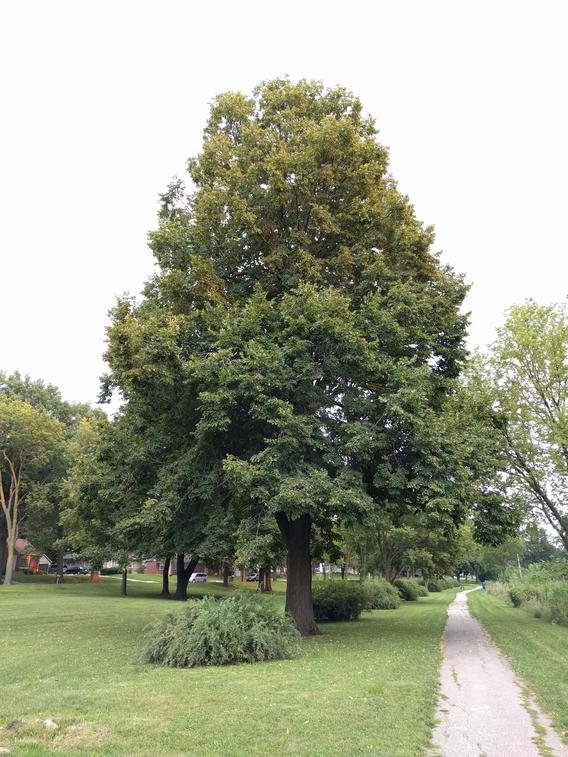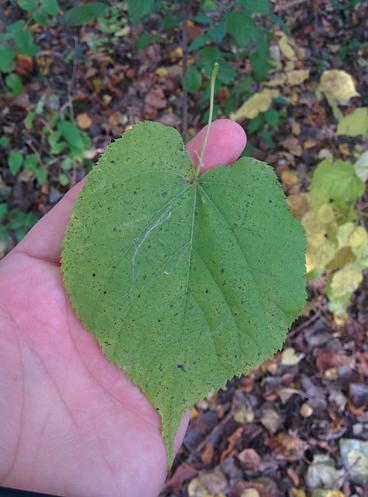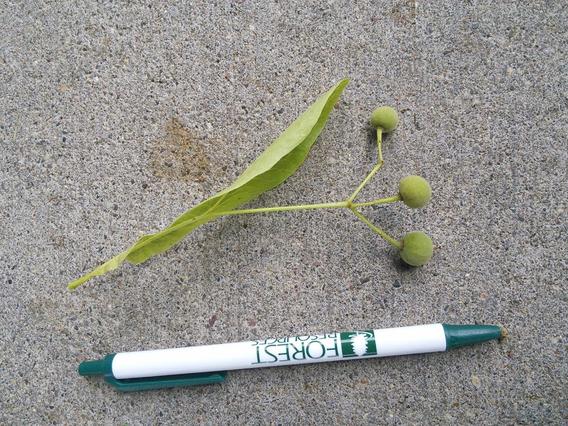
American linden, Tilia Americana, or also known as American basswood is a medium to large tree, typically 60-100 feet tall at maturity with a rounded crown reaching anywhere from 30 to 50 feet in width. It has large leaves (up to 6 inches) that are ovate in shape, and dark green with acuminate tips, serrate margins, and uneven cordate bases. American basswood produces a cyme of 5-10 fragrant pale yellow flowers in late spring and early summer. The cyme then produces two small brown nutlets subtending a leafy bract. In the fall, the leaves turn from the deep green found in the summer to pale green and develop into pale yellow. Basswood twigs grow in a zig-zag pattern and can be green, red, or brown in color. Like the twigs, the buds of the leaves can be green or red. The bark on an American basswood tree tends to be gray or brown with shallow, flat-topped ridges.

American basswood is a popular urban tree and is planted in wide boulevards and parks in city landscapes. It tolerates both acidic and alkaline soils. It is intolerant of road salt or spray, so it is best to plant this tree at least 30 feet away from busy roads. It is a very popular urban landscape tree in Minnesota due to its large crown, providing lots of shade. The wood is soft and has a fine grain, making it a popular choice for wood carving and can also be used for furniture and pulpwood. Honey made from these flowers is a prized gourmet food item, and the flowers can also be used to make tea. The sweet tree sap can also be used to make syrup.
The trees' fragrant flowers attract pollinators such as bees and butterflies, making it a good choice for nectar in city areas where there may not be as many gardens or wildflowers. Bees produce rich, sweet honey from the nectar. American basswood seeds are often eaten by chipmunks and squirrels. The tree also provides a habitat for wildlife.

Its native range includes Minnesota and extends across the northeastern half of North America. Native habitats include upland hardwood forests and valleys that have moist soils. It is the northernmost of the basswood species. American basswood has 6 different cultivars, slightly differing in height and in width of the crown as well as how dense the pubescence is on the leaves.
Insects such as aphids, Japanese beetle, and linden beetle all pose potential threats to the foliage of the tree, but these are cosmetic issues and are not a fungal threat. Fungal problems such as anthracnose and Verticillium wilt can cause issues in American basswood such as causing leaves and twigs to die off. Pruning off dead twigs and leaves will help minimize the effects from these fungal problems.
References:
Tilia americana 'Redmond'. Missouri Botanical Garden. Found online: http://www.missouribotanicalgarden.org/PlantFinder/PlantFinderDetails.aspx?kempercode=c156
American Basswood. Campus Tees, University of Minnesota. Found online: http://campustrees.umn.edu/american-basswood
American basswood. The Morton Arboretum. Found online: https://www.mortonarb.org/trees-plants/tree-plant-descriptions/american-basswood